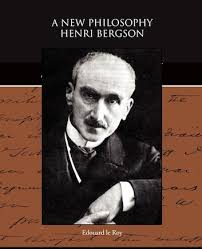Chapter I — Mr Bergson’s Work and the General Directions of Contemporary Thought
byChapter I opens with a reflection on how Henri Bergson’s thought marks a turning point in modern philosophy, particularly in how we approach consciousness, reality, and the sacred. His work introduces a way of thinking that does not begin with definitions or logical premises but with life itself—moving, changing, and creating. Bergson places intuition and imagination at the center of philosophical inquiry, offering an alternative to the sterile detachment often found in rigid rationalism. Though he does not write theology, his ideas stir questions about the divine and the spiritual. He suggests that reality is not something to be dissected but something to be entered, felt, and created with. This shift in approach opens space for a more intimate, imaginative way of understanding existence—one that resonates with the spiritual core of human life.
Bergson’s influence grew at a time when science seemed to dominate intellectual discourse, offering certainty through measurement and structure. Yet for many, this framework left something out—life’s inner vitality, its capacity to surprise, its emotional weight. Bergson answers this by calling for a philosophy rooted in experience, not formulas. He does not reject science but believes it is one way among many to know the world. What science misses, he says, is the creative movement that defines living beings. This movement cannot be captured by analysis alone. Bergson’s philosophy thus becomes an invitation: to turn inward, to notice the quiet flow of intuition, and to find knowledge not only in facts but in the pulse of existence itself.
In examining life’s movement, Bergson introduces the concept of creative evolution—a view that regards time not as a backdrop but as a force. Unlike the mechanical models of Darwinism, which focus on adaptation through necessity, Bergson sees evolution as driven by an inner impulse—a élan vital—that pushes life toward new forms and expressions. This isn’t randomness, nor is it fixed design. It is creation, unfolding moment by moment. This view has implications beyond biology. If life evolves creatively, then so must consciousness, morality, and even spiritual understanding. Bergson’s thought opens the possibility that human awareness itself is unfinished, always moving toward deeper forms of insight. In this light, spirituality becomes not a doctrine to accept but an experience to grow into.
The early sections of the chapter also highlight Bergson’s methodology, which resists constructing systems. Instead, he values approach over outcome. His philosophy is like a path, meant to be walked rather than mapped. Each step taken through his writing aims to bring the reader closer to life’s essence—not through explanation but through felt understanding. This style demands patience, because it does not offer immediate conclusions. But for those who persist, it reveals a new way of thinking that is as transformative as it is philosophical. The goal is not simply to “know” more but to experience reality more deeply and with greater freedom.
The chapter also critiques the limitations of purely analytical reasoning, especially when used to explain consciousness. Bergson argues that breaking the mind into parts—sensation, memory, logic—misses the essential continuity of thought. Consciousness, he suggests, is not built from blocks but flows like a melody. Each note matters, but only in relation to what comes before and after. This musical metaphor reflects his belief that philosophy must be sensitive to movement, rhythm, and unfolding. What matters most can’t be frozen in place—it must be lived. This view challenges the dominance of analysis and proposes a broader vision that includes intuition, emotion, and direct experience as valid sources of knowledge.
At a time when many thinkers were losing faith in older forms of belief and certainty, Bergson offered a new foundation—one that embraced uncertainty not as failure but as freedom. He helped shift the conversation from rigid categories to lived realities, from explanation to participation. His influence reaches beyond philosophy, shaping literature, psychology, and even religious thought. Not because he offers answers, but because he reframes the questions. Rather than ask what life is, he asks how it moves, how it feels, how it creates. And that question—how life creates—becomes the starting point for a philosophy that remains alive.
In summary, this chapter lays the groundwork for a way of thinking that honors life’s complexity without trying to simplify it. Bergson offers a vision where truth is not outside us, waiting to be found, but within us, waiting to be lived. Through his exploration of time, evolution, and consciousness, he reminds us that philosophy is not just a discipline of the mind—it is a movement of the soul toward greater understanding. His legacy is a living one, inviting each reader not just to think differently, but to feel and live more fully in the world.

